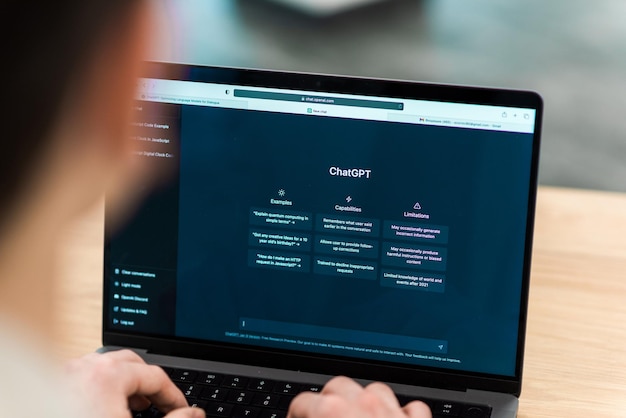Is there an API available for Google Bard? This question might be on the minds of developers, creators, and enterprises who are interested in harnessing the power of this conversational AI service. Well, let’s delve into it.
Firstly, it’s important to note that Google Bard is a conversational AI service introduced by Google at its I/O 2023 event on May 10, 2023. Powered by LaMDA, a formidable language model capable of generating coherent and natural responses to a wide range of queries and prompts, Google Bard aims to combine extensive knowledge with the intelligence and creativity of large language models. It serves as an outlet for creativity and a breeding ground for curiosity, enabling users to explore new concepts, indulge in their interests, and engage in entertaining conversations.
But let’s get back to the main question: Does Google Bard offer an API? The answer is yes! And here’s where things get interesting. Developers, creators, and enterprises can utilize this API to construct innovative applications infused with artificial intelligence. How exactly? Let’s dive deeper.
An Application Programming Interface (API) acts as a conduit through which software applications communicate with one another. It establishes rules and protocols governing data exchange, function availability, and parameter requirements. APIs open doors to accessing data, services, or features from external applications or platforms.
Picture this scenario: You’re using a weather app on your phone. Ever wondered how it retrieves the latest weather information? APIs come into play here. The weather app sends a request to an API provided by a weather service provider. This API responds by delivering standardized data format containing the relevant weather information. The weather app then seamlessly displays this data on your screen in a user-friendly manner.
Now that we have grasped the importance of APIs in various domains let’s understand why they are crucial for conversational AI.
Conversational AI relies heavily on APIs because they enable developers to integrate the power of conversational AI into their own applications or platforms. Conversational AI encompasses technologies that empower machines to comprehend and generate natural language, be it in the form of speech or text. The possibilities are immense, ranging from creating chatbots and voice assistants to designing smart speakers and other interactive applications capable of engaging in natural and seamless conversations with humans.
However, building a conversational AI system from scratch can prove to be an arduous task, demanding substantial amounts of data, computational resources, as well as expertise in natural language processing (NLP), machine learning (ML), and artificial intelligence (AI). This is where existing conversational AI platforms or services come into play, offering pre-built solutions catered to common use cases.
By leveraging APIs, developers can harness the capabilities of these conversational AI platforms or services without the need to construct an entire system from scratch. They can effortlessly send requests containing input data—be it text or speech—through the API, which then returns output data in a standardized format. Developers can incorporate this output data into their own application or platform according to their individual needs and preferences.
Does Google Bard have an API?
The answer is a resounding yes! Google Bard is part of Google’s Generative Language API—an extensive suite comprising tools and APIs that grant developers access to Google’s powerful large language models and generative AI capabilities. Google announced both Google Bard and the Generative Language API at their I/O 2023 event.
Powered by LaMDA (Language Model for Dialogue Applications), which has been trained on vast amounts of text data sourced from various online platforms such as books, news articles, blogs, social media posts, and more—the Generative Language API enables open-ended conversations on any topic while catering to specific tasks or domains. It offers different versions of LaMDA models with varying resource requirements and specializes models fine-tuned for specific tasks or domains. The Generative Language API also provides developers with testing, monitoring, and quality improvement tools to ensure the generated responses meet high standards.
Although the Generative Language API is currently in beta testing mode, Google has begun onboarding individual developers, creators, and enterprises who are eager to experiment with this powerful tool and provide valuable feedback. In the near future, Google intends to make the Generative Language API more widely accessible to the public.
So how can developers utilize Google Bard’s API? Let’s shed some light on that.
Developers keen on incorporating conversational AI capabilities into their applications or platforms can leverage Google Bard’s API. This empowers them to create chatbots, voice assistants, smart speakers, and other interactive applications capable of engaging users in natural and captivating conversations.
To utilize Google Bard’s API effectively, developers must possess a Google Cloud Platform (GCP) account and have a project set up on GCP. Enabling the Generative Language API service within their project grants them an API key necessary for authentication and permission. Armed with this key, developers can effortlessly send requests to Google Bard’s API endpoint containing their desired input data—be it text or speech—and receive responses in a standardized format as output data.
Developers have ample flexibility to customize their requests and responses based on their unique requirements and preferences. They can specify model versions, domains or tasks, language specifics, tones, styles, and other crucial parameters. The Generative Language API also equips developers with tools for testing, monitoring, and enhancing the quality and safety of the generated responses.
how to use Google Bard’s API let’s explore some examples that illustrate its practical applications across various domains
Education:
Google Bard’s API can be instrumental in creating educational chatbots capable of helping students learn new things in an engaging manner. For instance, it can explain complex topics using simple language suitable for a wide range of learners. Imagine a 9-year-old receiving explanations from Google Bard about the latest discoveries made by NASA’s James Webb Space Telescope! Additionally, Google Bard can provide feedback, guidance, and encouragement to students, offering assistance with homework, quizzes, and projects.
Entertainment:
Google Bard’s API provides fertile ground for the creation of entertaining chatbots that deliver immersive experiences to users. With this API, developers can generate stories, poems, songs, jokes, games, and other creative content based on user input or preferences. Furthermore, Google Bard can personalize recommendations, suggestions, and reviews tailored to individual tastes and interests.
Health:
The health domain can benefit greatly from Google Bard’s API. Developers can utilize it to create health chatbots capable of assisting users in achieving their wellness goals. For instance, Google Bard can provide users with information, advice, and support related to various health topics such as nutrition, fitness, mental health, and more. It can also monitor users’ health status, track their progress, and motivate them towards achieving their goals.
Travel:
In the realm of travel planning and enjoyment, Google Bard’s API offers unique possibilities. Developers can create travel chatbots that provide users with information about various travel destinations including attractions and activities. With its capabilities extending beyond mere recommendations—Google Bard can even assist users in booking flights, hotels, car rentals, and other services.
As you can see from these examples across different domains—education, entertainment, health care,and travel—Google Bard’s API unveils endless opportunities for developers to craft innovative applications that enhance user experiences through natural and engaging conversations.
So there you have it—an insight into the presence of an API for Google Bard along with its potential applications across diverse fields. With this knowledge in your arsenal take a leap into the world of conversational AI and unlock the power of human-like interactions!
Conclusion
Google Bard is a conversational AI service that is powered by LaMDA, a large language model that can generate natural and coherent responses to any kind of query or prompt. Google Bard is part of Google’s Generative Language API, which is a suite of tools and APIs that allows developers to access Google’s large language models and generative AI capabilities. Developers can use Google Bard’s API to integrate conversational AI capabilities into their own applications or platforms. They can use Google Bard’s API to create chatbots, voice assistants, smart speakers, and other interactive applications that can communicate with users in a natural and engaging way. Google Bard can be used in various domains and scenarios, such as education, entertainment, health, travel, and more.








